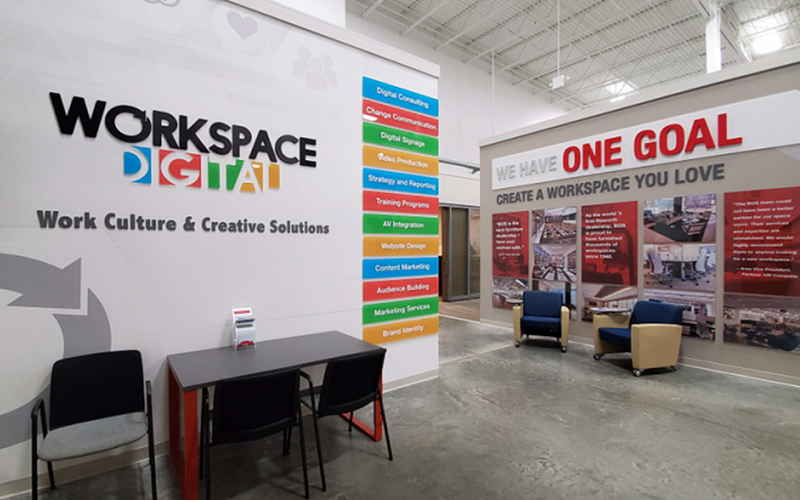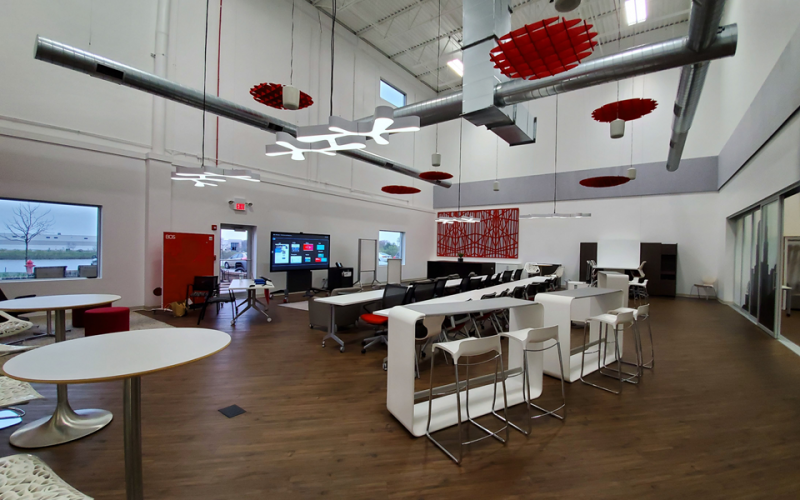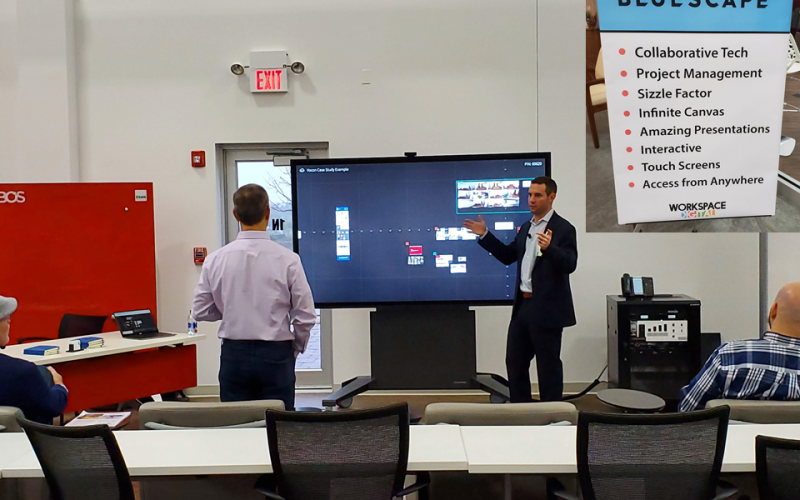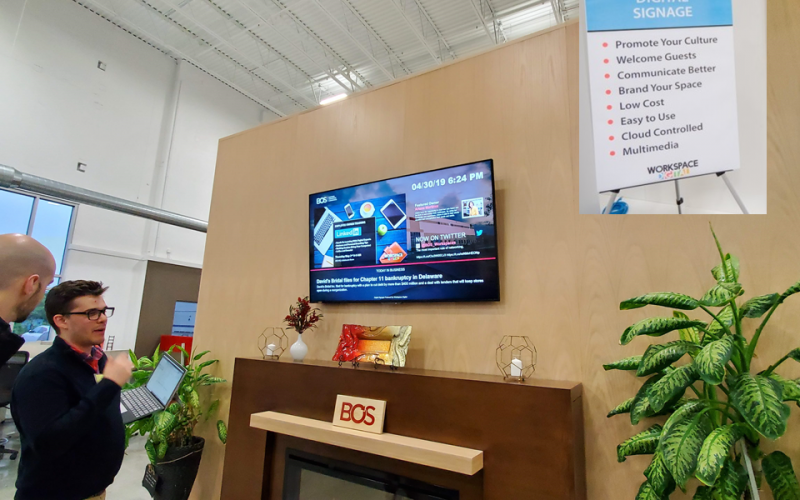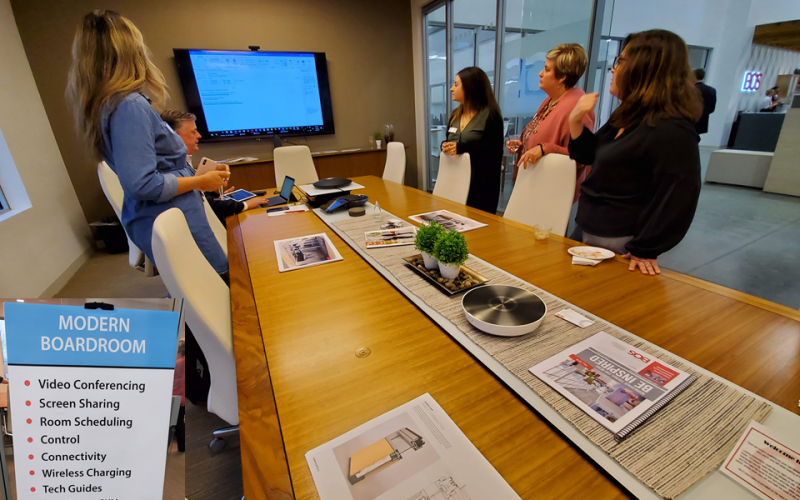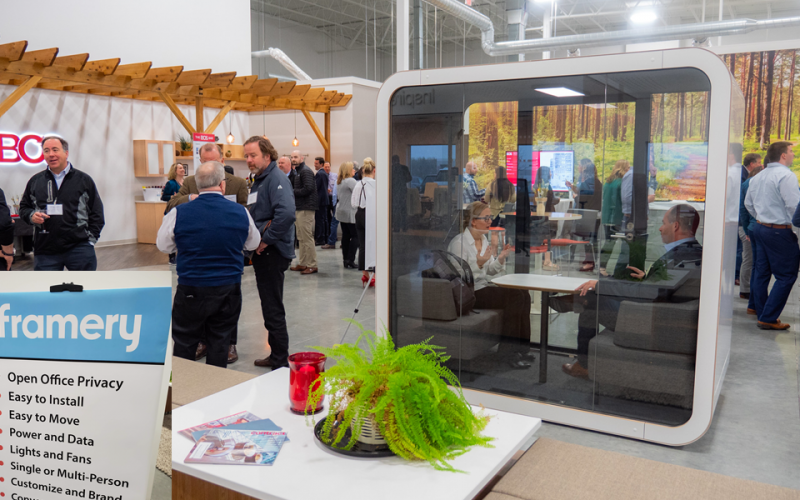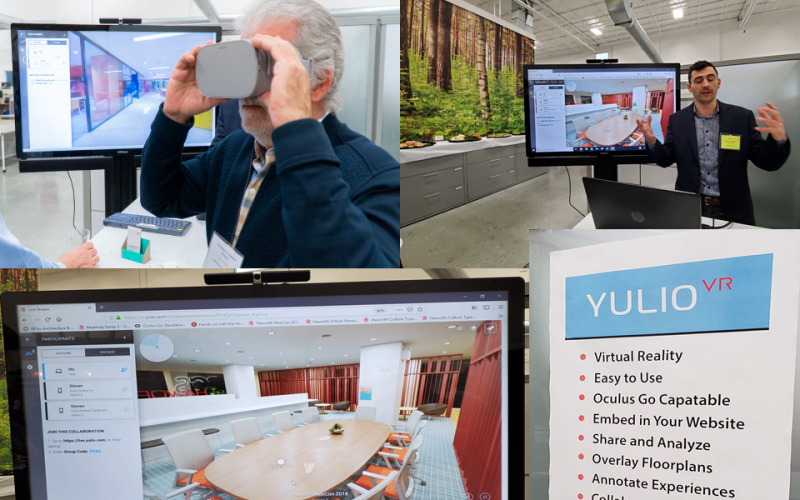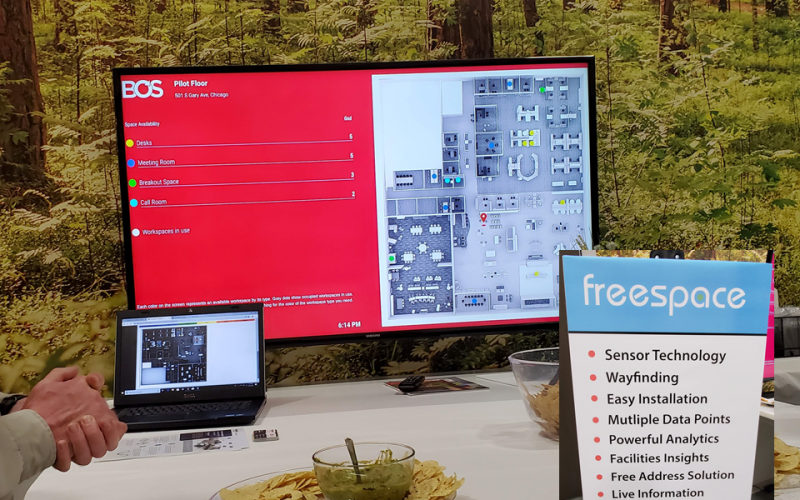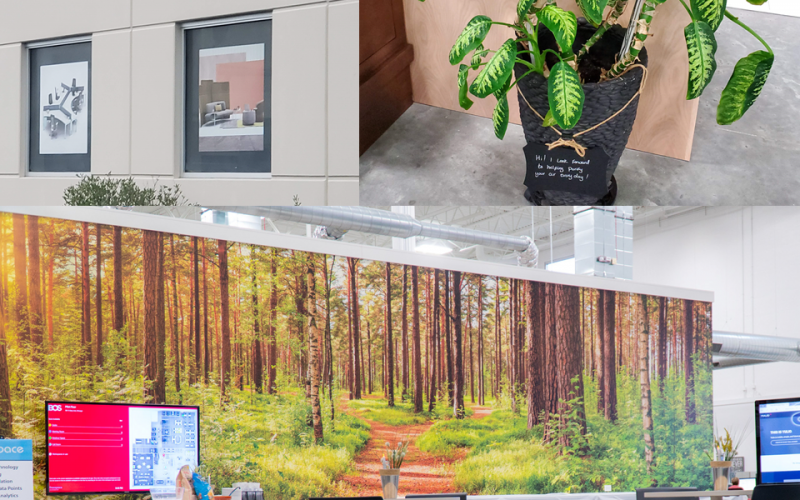It’s the Little Things
While it’s easy to think about the impact of larger office investments like seating, walls, and technology, don’t forget about the finer details. Little things can have a big impact on how employees feel in a space, which in turn impacts their productivity levels.
In the BOS space, for example, the building’s windows feature displays showing some of the designs the team is working on, as seen in the upper-left corner. From inside the building, however, you can’t even tell anything is on the windows because the signage is on special perforated material that’s designed not to be visible from the inside and to let in natural light.
In the top-right corner of the above slide, there’s a plant. A cutesy sign on it reads, “Hi! I look forward to helping purify your air every day!” This is another element that serves a dual purpose — the plant purifies the air and it serves as a design element by bringing some fresh greenery into the workspace, which can help boost employee mood.
Finally, stretching across the bottom of the slide is a large mural that BOS has in the center of its showroom. To BOS, it signifies the company’s commitment to helping businesses find their path through the forest. Details like this can help reinforce company culture and goals. In fact, all these little details can make a big difference to the employees working in the space, Pfeiffer said.

